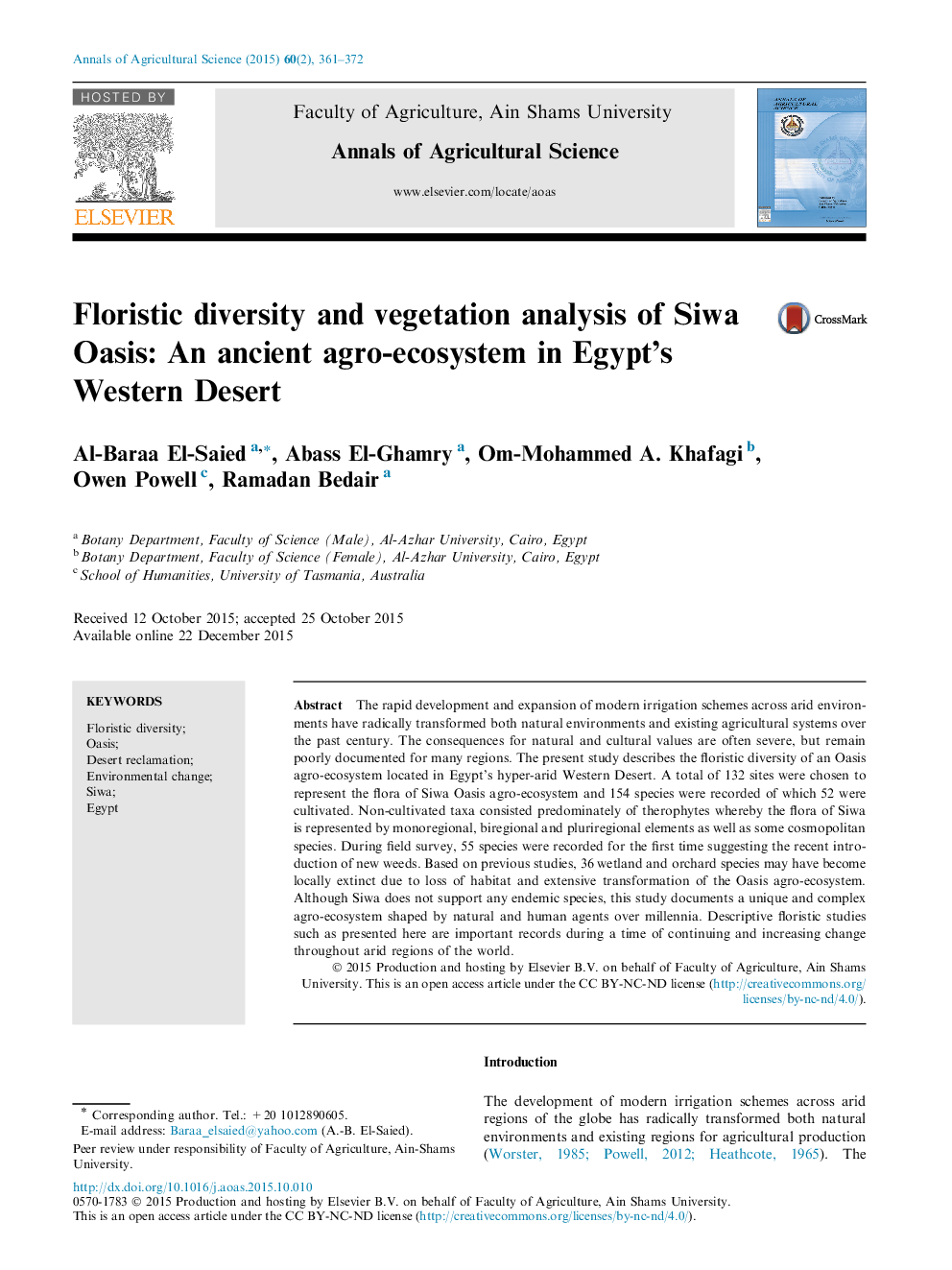| Article ID | Journal | Published Year | Pages | File Type |
|---|---|---|---|---|
| 4492847 | Annals of Agricultural Sciences | 2015 | 12 Pages |
The rapid development and expansion of modern irrigation schemes across arid environments have radically transformed both natural environments and existing agricultural systems over the past century. The consequences for natural and cultural values are often severe, but remain poorly documented for many regions. The present study describes the floristic diversity of an Oasis agro-ecosystem located in Egypt’s hyper-arid Western Desert. A total of 132 sites were chosen to represent the flora of Siwa Oasis agro-ecosystem and 154 species were recorded of which 52 were cultivated. Non-cultivated taxa consisted predominately of therophytes whereby the flora of Siwa is represented by monoregional, biregional and pluriregional elements as well as some cosmopolitan species. During field survey, 55 species were recorded for the first time suggesting the recent introduction of new weeds. Based on previous studies, 36 wetland and orchard species may have become locally extinct due to loss of habitat and extensive transformation of the Oasis agro-ecosystem. Although Siwa does not support any endemic species, this study documents a unique and complex agro-ecosystem shaped by natural and human agents over millennia. Descriptive floristic studies such as presented here are important records during a time of continuing and increasing change throughout arid regions of the world.
